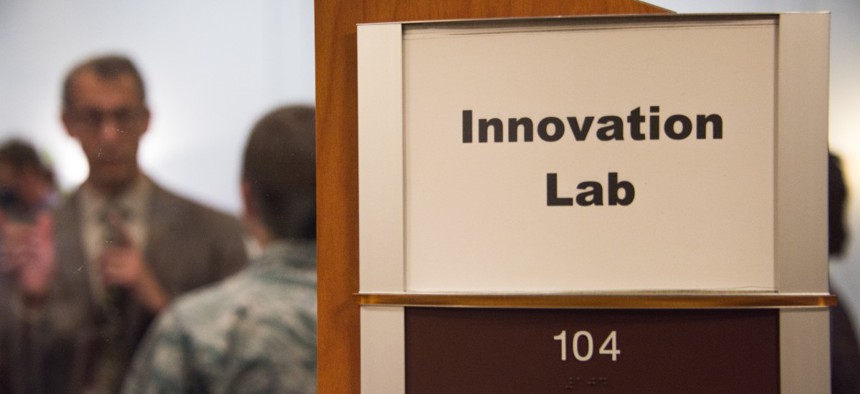Defense Officials Emphasize Lab Modernization, Acquisition Reform Among Budget Priorities

Airman 1st Class Samuel Contreras/Air Force
Speaking before a House subcommittee, Department of Defense leaders identified critical operation areas within DOD offices that demand more federal funding to continue research and development.
During a House committee hearing, Defense officials discussed the imperative for more advanced research, development, and deployment of emerging technologies within the agency as national security evolves into an international race to see which nations can be the first to integrate advanced technologies into its defensive forces.
Witnesses from offices within the agency testified on DOD’s budgetary needs before the House Armed Services Subcommittee on Cyber, Innovative Technologies, and Information Systems on Thursday.
A major priority item for the agency is modernizing the physical infrastructure within Defense’s laboratories.
“First thing I would do is to help you get more MILCON money to help out in our lab and test infrastructure,” Heidi Shyu, the under secretary of Defense for Research and Engineering testified. “I think that piece is absolutely critical for us to put some additional funding against.”
Shyu highlighted a more specific need within Naval laboratories to modernize their electromagnetic and cybersecurity countermeasures, to better evaluate emerging digital threats facing networks today. She estimated that this would require roughly $500 million in federal funding.
Subcommittee Chairman Jim Langevin, D-R.I., noted that he was surprised by the lack of funding DOD received from Congress in its prior budget allocations.
“I have to say that it’s shocking that we face a massive backlog in laboratory investment, more than $5.7 billion in the latest report to Congress,” he said. “These challenges affect not just the pace and breadth of innovation, but also our ability to attract and retain the top tier talent that we depend on.”
Hiring and retaining a strong workforce also relies on the need for more advanced infrastructure. Witness Paul Mann, the acting deputy assistant secretary of the Navy for Research, Development, Test and Evaluation, said that modern facilities are a main draw for experts in STEM fields when it comes to selecting a workplace.
“While we're balancing all of the investment in the S&T [science and technology] portfolio, attracting the world's best and brightest, getting them here and unleashing their talent for decades. We want them to enjoy working in modern facilities.” Mann said.
He further added that competing with private sector firms and other public agencies regarding modern labs and equipment “is always challenging,” and that updated labs are key to successful warfighting projects.
“The laboratories that these professionals can execute their mission will go a long way to sustaining our enduring advantage,” Mann said.
Shyu clarified that Defense research looks into technologies including biotechnology, advanced materials, quantum science and hypersonics. She added that the agency is also spending a good portion of budget funding on cyber technologies, but it is difficult for contracted producers to advance the production of prototypes, due to a lack of funding within the acquisition process.
“Some companies can get venture capital money to help out, some companies are not able to do that because they may be building a component that goes into a system, right? So they're looking for capital,” Shyu said. “ We're in the process of trying to figure out how to help them to do the rapid transition.”
Defense is working on internally cultivating a program to develop strategic capital and disseminate it to small companies contracted with the agency to help fund research and prototype development. Shyu said this will launch first within the Air Force and ideally move across the entire Department of Defense.
“This really helps the small business to get a lot more funding to continue to develop the prototypes and mature to the face,” she said. “They can transition. So we're in the process of creating and standing up this office right now.”
Within Air Force leadership, Kristen Baldwin, the deputy assistant secretary of the Air Force for Science, Technology and Engineering, cited an internal Air Force study that outlined the bureaucratic hurdles Defense procurement and acquisition face.
“It is not only just to focus on attracting those small businesses and investing in innovation, but rather the funding that is required to transition from a small business S&T contract into a program of record,” she said. “I would just say as well that it's also been commented that the acquisition process is the broken process.”
An improved acquisition process would ideally financially support small producers so they can work alongside DOD, develop fully-fledged technological devices and bridge the “valley of death” between concept and prototypes.
“We have a set of major recommendation findings,” Baldwin said regarding the Air Force’s study. “Number one is tech transition funding to cross the valley of death.”






